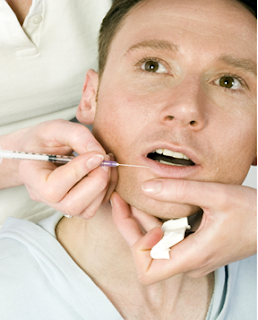updated 7/22/2011 2:27:37 PM ET
NEW YORK — Fat transferred under the eyes to create a younger-looking face can last for at least three years, suggests a new study of people who had the surgery.
The procedure involves taking fat from the belly or thighs and injecting it below the lower eyelid, to puff up an area that surgeons say generally begins to lose its shape by the time people are in their 30s.
Doctors say it's more "natural" and lasts longer than injecting commercially-made wrinkle fillers, but there's also a risk of complications and a higher price tag that comes along with the fat-transfer surgery.
"It's becoming a very common procedure and a way to naturally rejuvenate especially the lower eyelid area," said study author Dr. Cory Yeh, a plastic surgeon from Laguna Woods, California.
"The vast majority of patients are seeing results up to three years," Yeh told Reuters Health.
"The question is always, are we going to be seeing results past that point?"
Surgeons said the procedure typically takes an hour or more, and costs $3,500 to $4,000.
For the new study, published in Archives of Facial Plastic Surgery, Yeh and Dr. Edwin Williams, from the Albany Medical Center in New York, tracked photos of 99 people who had the fat-transfer surgery between 2004 and 2008.
Patients were between 35 and 71 years old, and almost all were women.
Those patients came back to the office for photos of their eye area every few months for up to four years following the surgery. Without knowing when the photos were taken, other members of the study team rated how much improvement, if any, they saw in patients' faces from their original, pre-surgery photos.
In pictures taken a year or less after the surgery, 5 percent of patients showed no improvement, 51 percent had mild improvement, and 44 percent had marked improvement.
By two to three years post-surgery, 14 percent of patients had no improvement from their original photos, 68 percent had mild improvement and 18 percent had marked improvement -- but the researchers only had data on 22 patients that far out.
The most common complication of the surgery was swelling lasting more than a couple weeks. Some patients also had bruising under the eyes or minor "asymmetries" -- meaning one under-eye had more volume than the other after surgery. Patients can also get little lumps under their eyes post-surgery, doctors said.
Yeh said the findings "matched our expectations" in terms of how long the results would hold up after surgery.
"We know that the person's going to continue to age, and that they're going to continue to lose volume" under the eyes, he said. "I would have been shocked if we'd said, 'No, everybody remains perfect.'"
Dr. Jason Meier, a plastic surgeon from Jacksonville, Florida, said the procedure is a few times more expensive than typical commercial injections, but that those injections need to be repeated about every year.
The current study did not look at any results from patients who got those injections.
"Fat transfer is an excellent, permanent option for patients who want a natural, rejuvenated look in the under-eye area," Meier, who was not involved in the new research, told Reuters Health.
"Some things don't end up perfectly precise," but that can be corrected with follow-up procedures, he added. "Uniformly, everyone is very satisfied."
Yeh said the extra volume may not last as long in elderly patients, or those that smoke or exercise a lot.
But he said the fat-transfer procedure is becoming more common, and that it's "appealing to many patients because this is a natural way of using their own body fat."




